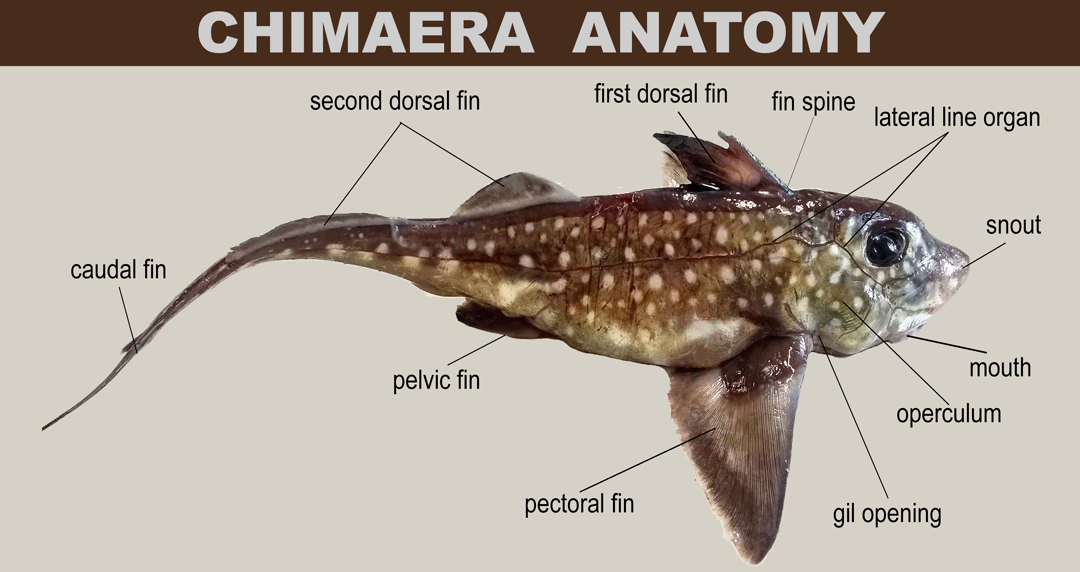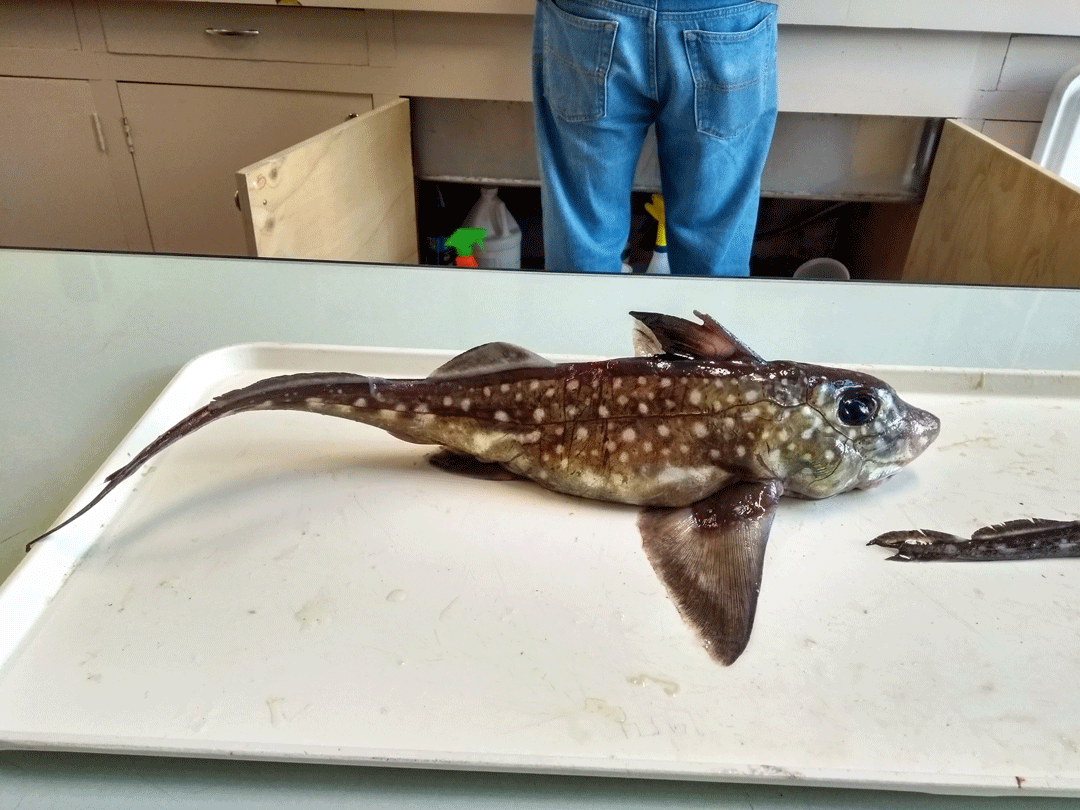Chimaeras, the sharks’ forgotten cousins
Chimaeras are fishes closely related to sharks, skates, and rays. You may never hear about them, because they commonly live in deep waters up to 3000 meters, and it’s challenging to study them in their natural habitat. Chimaeras also have less coverage in the media compared to their most famous relatives, the sharks. In this post, I´ll try to go “deep” into these amazing fishes. Chondrichthyans are fishes with cartilage skeletons (similar to our ears). This group includes the Elasmobranch, (sharks, skates, and rays) and Holocephalans, in which are the Chimaeras that evolved with different characteristics from elasmobranchs 400 million years ago.
Unique fishes
There are around 49 species of chimaeras in the world so far. These fishes have an elongated and cone-shaped body whit a whip-like tail and smooth skin without scales. Their size, when adults range from 60 to 150 cm. Chimaeras have large eyes, a single gill opening, and a small mouth with a particular pair of teeth in the lower jaw which pops out from the mouth like rodents’ incisors. Due to their teeth, chimaeras are commonly known as ratfish or rabbitfish. They also called spook fish or ghost shark because of their spectral appearance, but don’t be afraid, chimaeras are strange but have some charm.

General anatomy of the chimaeras. Image © Luz Erandi Saldaña-Ruiz
Chimaeras are oviparous, which mean that they lay eggs cases in the sand or buried in it. The egg capsules are generally spindle-shaped; some egg cases have a broad frilled edge that varies in size and shape depending on the species. The hatchlings are developed like miniature adults. The next time you are walking on the beach, pay close attention, and you may come across a surprise in the form of an egg case of chimaera…and if you do, please give a call. Chimaeras are fascinating fishes inhabiting the depths of the world´s oceans, except the Antarctic, in temperate waters and tend to occur on or near the seafloor.

Chimaeras eggs cases. Photo © Luz Erandi Saldaña-Ruiz
Chimaeras fisheries and conservation
While chimeras live in hard-to-reach places, they are sometimes caught incidentally by deep-sea fishing nets. It is also common to observe chimeras in videos of deep-sea exploration with submarines, and this has given us an excellent opportunity to see the chimaeras in their natural habitat. In some fisheries of the northern region of the peninsula of Baja California, Mexico, chimaeras are incidentally caught. But we still know very little about chimaeras. Information is key to identify the possible impacts of fishing in these fishes and to understand what actions to take for its fisheries management and conservation.
Studying Chimaeras
As a marine biologist, I’m interested in many fishes, especially sharks and rays, but chimaeras are the most interesting fish I have encountered. But what motivates me most to study chimeras were the huge information gaps in my region and the complete lack of public awareness about these fishes.

Photo © Luz Saldana Ruiz
I developed a research project to be able to study chimaeras, to collect information, and to establish a baseline of the interaction of these fishes with the fisheries for further conservation actions. In this project, I will also focus on a deep shark species, the prickly shark, but I will talk you more about it in another blog post. It was because the Save our Seas Foundation believed in my project that I obtained funds to carry it out. And that’s how an exciting stage in my life as a biologist, researcher and as a person began. I am eager to tell you more about chimaeras and this project soon.
